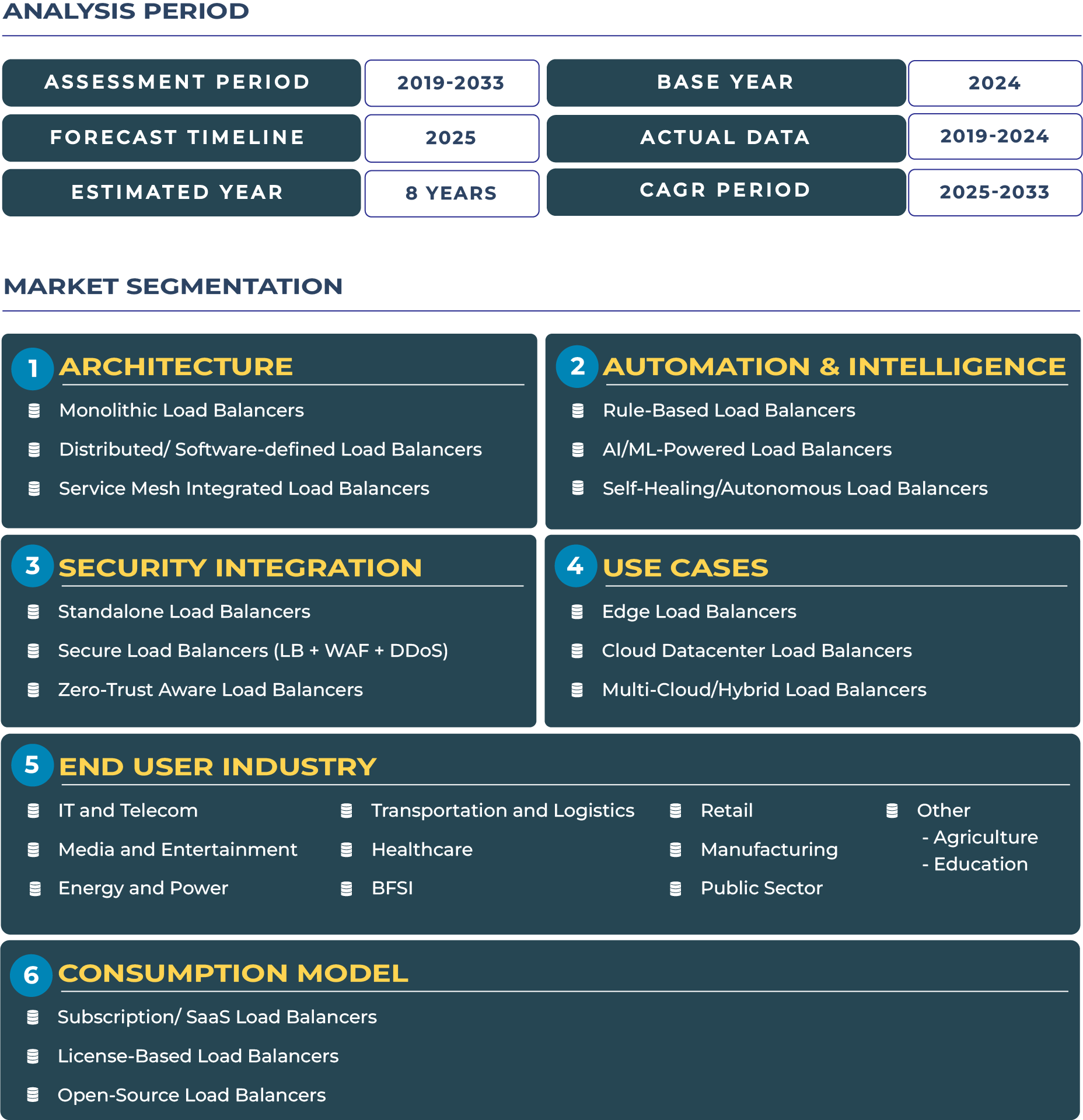Report Format:
![]()
![]() |
Pages: 110+
|
Pages: 110+
Germany Cloud Load Balancers Market Outlook: Germany’s Engineering Culture Driving Reliable and Scalable Cloud Load Balancers Market
In a country defined by precision engineering and industrial strength, enterprises are prioritizing reliable, high-performance load balancing solutions to support Industry 4.0 and mission-critical IT infrastructure. According to DataCube Research, the Germany Cloud Load Balancers Market is estimated to reach USD 164.1 million in 2025 and projected to grow to USD 474.5 million by 2033, reflecting a robust CAGR of 14.2% (2025–2033). This trajectory is reinforced by sovereign cloud initiatives, the expansion of localized data centers, and sustained demand from Germany’s manufacturing and financial sectors. The Federal Ministry for Economic Affairs and Climate Action is actively supporting digital transformation, positioning Germany as a central hub for secure and sovereign enterprise cloud adoption.
Drivers and Restraints: Balancing Industry 4.0 Momentum with Compliance and Cost Challenges
Germany’s Industry 4.0 adoption is a key driver fueling demand for distributed and service mesh-integrated load balancers. Manufacturing giants in automotive and machinery sectors increasingly require scalable cloud balancing to handle IoT-driven workloads and AI-driven predictive analytics. A strong manufacturing base underpins the adoption of hybrid and multi-cloud environments that enhance resilience and efficiency across supply chains. At the same time, sovereign cloud initiatives designed to secure data sovereignty are reinforcing the deployment of domestic cloud infrastructure, creating opportunities for locally hosted load balancer ecosystems.
Despite these drivers, challenges persist. Strict GDPR enforcement has heightened compliance demands for enterprises, creating complexity in managing cross-border data flows. High data center energy costs pose another barrier, particularly given Germany’s push for sustainability and rising electricity prices. Finally, a skills shortage in advanced cloud engineering limits the speed of enterprise adoption, requiring additional investment in workforce development. Together, these restraints underscore the importance of aligning technology strategies with both regulatory frameworks and sustainability goals.
Trends and Opportunities: From IoT-Driven Workloads to Sovereign Cloud Leadership
Germany cloud load balancers industry is being reshaped by transformative trends. IoT-driven workloads in manufacturing hubs such as Munich and Stuttgart are generating unprecedented demand for distributed load balancers capable of handling real-time data at scale. AI and automation use cases are accelerating adoption, particularly in financial services and healthcare, where dynamic traffic optimization and anomaly detection are critical. Additionally, sovereign cloud projects under GAIA-X are emerging as a hallmark of Germany’s approach, prioritizing digital sovereignty and reinforcing Europe’s cloud independence strategy.
Opportunities align closely with these trends. Industry 4.0 load balancing demand is expected to expand as industrial automation scales across supply chains. Hybrid cloud adoption in manufacturing offers a fertile ground for cloud load balancer vendors, addressing the need for agility while meeting compliance standards. Moreover, public-private initiatives spearheaded by German ministries and associations are actively incentivizing investments in secure, efficient cloud infrastructure, setting the stage for long-term growth in the sector.
Competitive Landscape: Sovereign Cloud Partnerships and Hyperscaler Expansion Defining Market Strategies
The competitive landscape of the Germany Cloud Load Balancers Market is characterized by collaborations between global hyperscalers and local enterprises. For instance, AWS announced plans in 2024 to expand its Berlin region, targeting regulatory-sensitive industries. SAP, Germany’s flagship enterprise technology provider, has been expanding its cloud ecosystem since 2023, focusing on data sovereignty and integration with GAIA-X standards. Meanwhile, the GAIA-X initiative gained significant traction in 2024, underscoring the importance of building sovereign load balancing solutions aligned with European compliance requirements.
Key strategies include the development of sovereign load balancer solutions to ensure GDPR compliance and meet rising enterprise demands for data sovereignty. Partnerships with industrial sectors are also becoming critical, enabling vendors to align with Germany’s strong engineering and manufacturing base. These strategies are consolidating Germany’s role as a pivotal market within Europe’s cloud ecosystem while reinforcing its reputation for engineering efficiency and compliance-led innovation.







